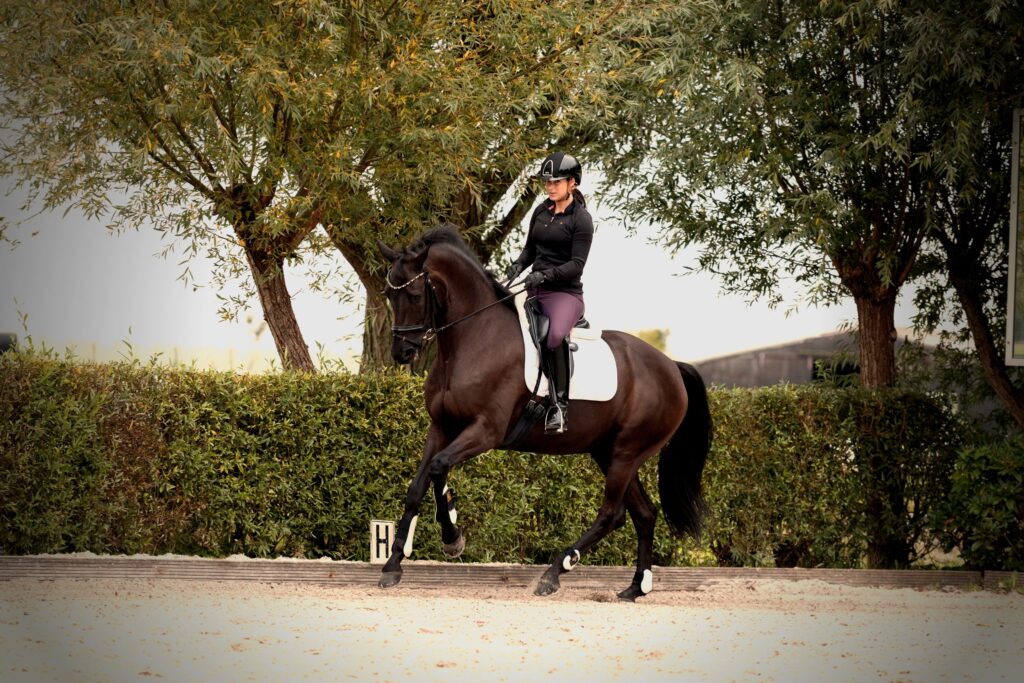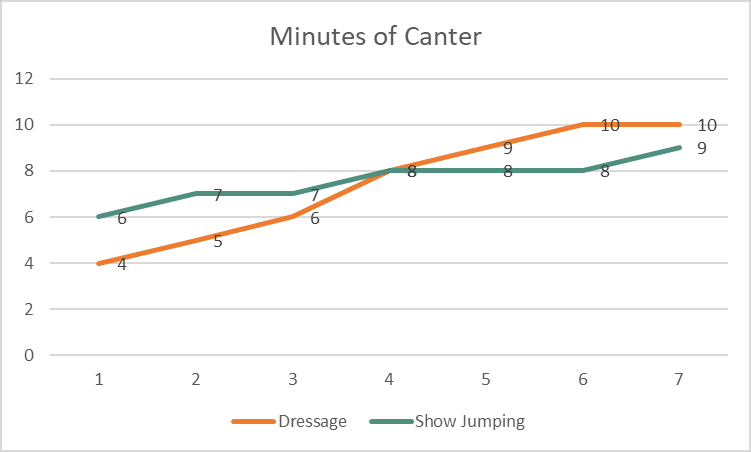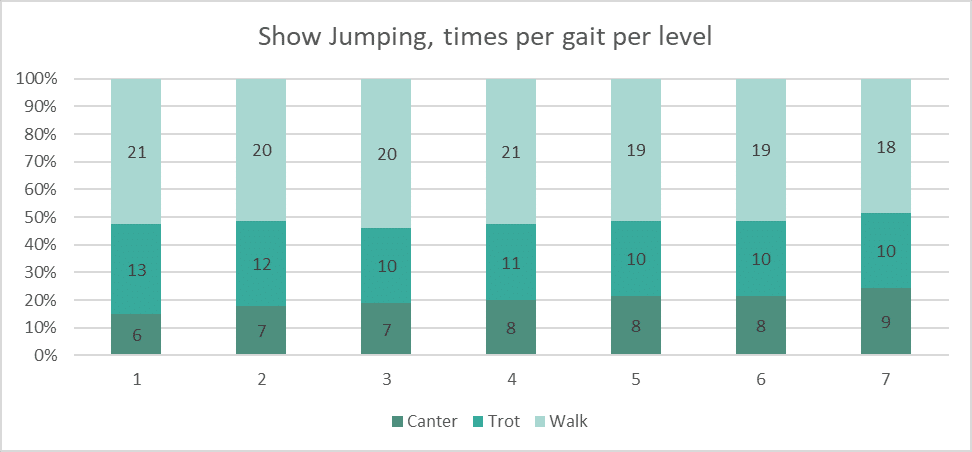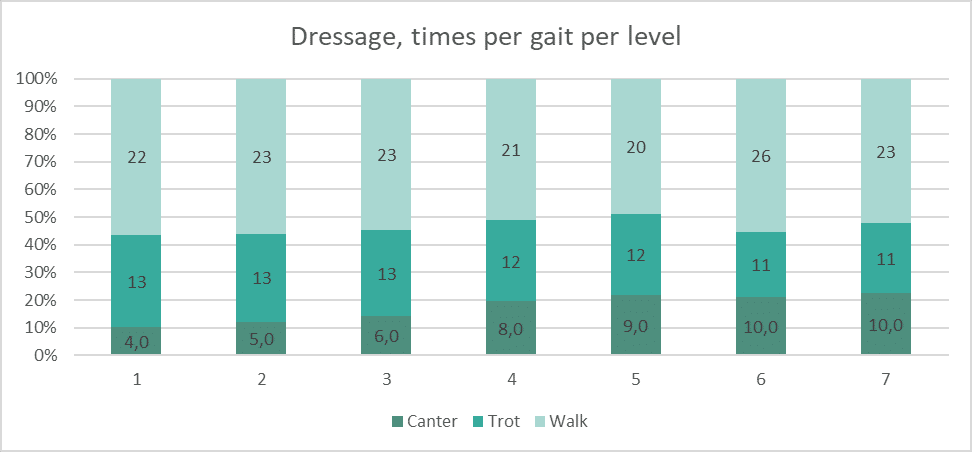Dressage riders at the highest level canter for an average of 10 minutes during a training session. And novice jumping combinations make many more transitions than the top class jumping combinations. Did you expect this? With both show jumping and dressage riders who train with Equestic, we see that there are not only differences per discipline and level, but also similarities. We are happy to give you some interesting data facts!
How many minutes do dressage riders canter during a training session?
Beginning dressage combinations canter for an average of 4 minutes in a 35-minute training session. The highest level riders canter 2.5 times longer, i.e. about 10 minutes. From this we can conclude that the higher the level of combination, the more cantering happens. Sounds logical, because in the highest classes there are also more exercises with canter. Think, for example, of pirouettes with a fairly collected canter and flying changes around the ring.
In the Equestic app you select different levels per discipline. Find out here at what level you are with your horse.
Top class show jumpers canter longer
Jumping combinations in the novice class canter for an average of 6 minutes in a 35-minute workout. That’s longer than novice dressage combinations, who canter for 4 minutes in a 35-minute workout. Logical in itself, when you consider that most starting jumping combinations already have a basis in dressage and are therefore less ‘green’. Also in show jumping we see that combinations at a higher level, canter longer during a training (9 minutes in total).
The higher the level, the more gallop
In both dressage and jumping combinations we see that the higher the level, the more canter during training. Below is an interesting chart that shows the rising line of the number of minutes of canter in combination with the rising level of the combination.
Do you want to know how much you canter with your horse during your training? Keep track of canter and other gaits with the Equestic SaddleClip.
Every horse is different
The calculated ‘averages’ in this blog are based on more than 100,000 training sessions in our Equestic database. Of course the facts are not targets. Every horse is different and we cannot (yet) make a distinction based on breed. Most horses in our database are Western European Warmblood horses (including the KWPN). More data facts about the levels per discipline can be found in the Equestic benchmark.
Number of transitions varies per level and per discipline
Our database shows that novice jumping combinations make many more transitions than top-class jumping combinations. So the higher the level, the fewer transitions are made in show jumping. In dressage you see that the number of transitions increases in higher disciplines. The higher the dressage level, the more transitions are made. From 37 transitions at the lowest level to 53 at the highest level. At the novice level, dressage combinations make a transition every minute on average.
Whatever your discipline or level is, riding transitions remain very important during a training. Reasons include to keep your horse flexible, to strengthen his hindquarters, but also to make him more alert and more responsive off the aids.
Trot remains the most ridden gait in a training and this is reflected in our database.
This can of course be due to getting rising and falling in the saddle with the rhythm of the post… What is interesting is that the step during a jumping training takes a little more time and that is at half the time component.
In both disciplines, an average of 11-12 minutes are spent trotting per training. The graphs below show the breakdown per gait in training sessions. The number of minutes in walk and trot remains about the same per level. On the other hand, you can clearly see the canter time increasing as the level progresses, as mentioned earlier.
Does your riding style resemble that of the average dressage or show jumping rider? Use the SaddleClip and Equestic app to gain more insight into your workouts.












